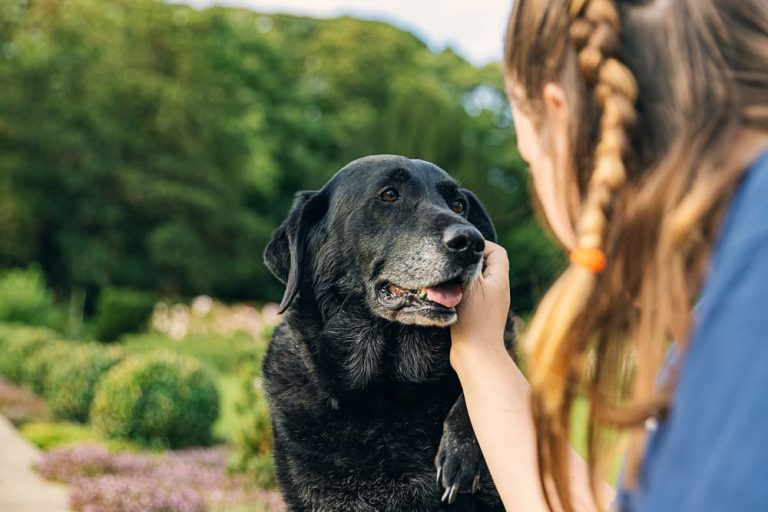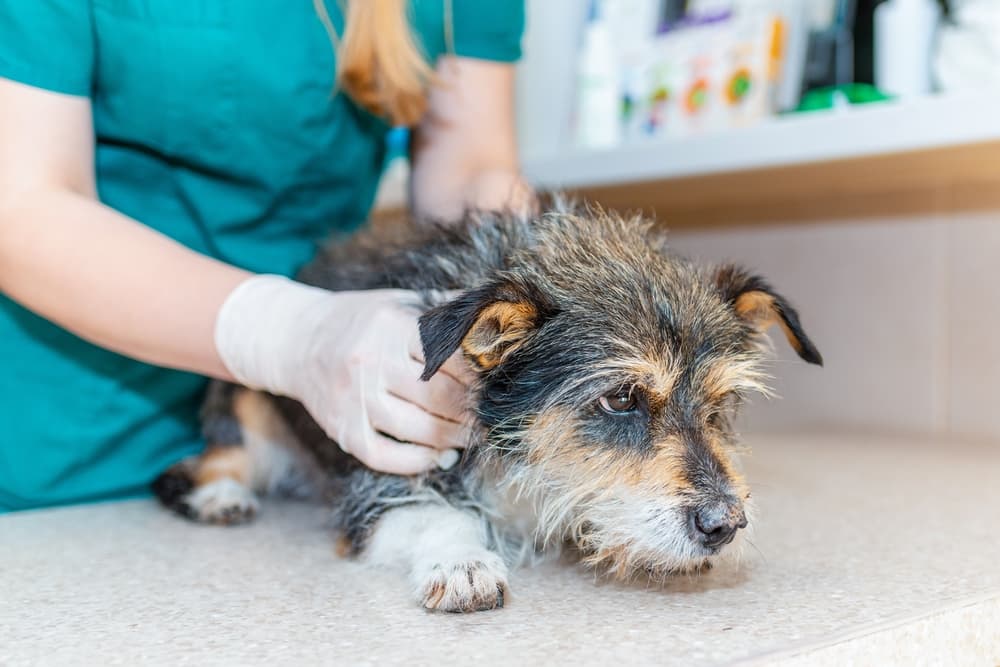7 Signs of Diabetes in Dogs

Diabetes is a difficult diagnosis for pet parents to hear, and unfortunately, it is a common disease seen in dogs. Fortunately, dogs diagnosed with diabetes can be managed with proper medication, exercise, and diet. The earlier you seek veterinary care for a diabetic dog, the less likely that dog will experience negative symptoms of diabetes and the more likely they are to live a long, healthy life.
That is why it is important to recognize the early symptoms of diabetes in dogs, so that if something is wrong, you can get help.
Here, we’ll outline some of the signs of diabetes in dogs, how these signs may look similar to or different from other diseases, and what pet parents should do if they suspect their dog may have diabetes.
Understanding Diabetes in Dogs
Diabetes mellitus is the most common type of diabetes in dogs. Insulin is the hormone that is largely responsible for blood sugar regulation in dogs. Diabetes is a disease where blood sugar is unregulated and higher than normal, either due to the loss of insulin-secreting ability by the pancreas, or insulin resistance.
Diabetes in dogs is thought to be caused by immune-mediated destruction of the cells of the pancreas, the organ that secretes insulin. This type is known as insulin-dependent diabetes mellitus, or IDDM.
Another disease, diabetes insipidus, also occurs in dogs and can be confused for diabetes mellitus. However, it is an unrelated disease of water metabolism.
Signs of Diabetes in Dogs

Diabetes mellitus in dogs is a fairly straightforward condition that has a list of typical associated symptoms. Here are some of the most common signs of diabetes in dogs:
Increased Urination
Increased urination is caused by sugar in the urine. Increased sugar in the blood makes the kidneys work hard to keep blood sugar levels in balance, and if the kidneys can’t keep up with the sugar in the blood, then they will try to flush excess sugar from the body through the urine. You may notice your dog having to go to the bathroom more frequently or having accidents in the house.
Increased Thirst
Increased thirst happens as the dog’s body becomes dehydrated from the kidneys dumping excess sugar in the urine. This signals the dog’s brain to drink more to compensate for the loss of fluid. Uncontrolled diabetic dogs are often dehydrated.
Increased Appetite
A dog with diabetes may have an increased appetite. This is because there isn’t enough insulin in the body or the body is resistant to insulin. Without insulin, sugar remains in the bloodstream until it is excreted by the kidneys, and doesn’t move into the cells where it is needed. This causes a dog to want to eat more than usual.
Weight Loss
Weight loss occurs for the same reason as increased appetite. The sugar in the blood cannot move into the cells, which starves the cells of needed energy and weight loss results.
Blindness
Blindness occurs from cataracts. The sugar in the blood can build up on the lens inside the eye, and can result in blindness. Owners will often notice increased opacity inside their dog’s lens as the cataract develops. Cataracts can cause total blindness, partial blindness, or decreased vision in low light.
Vomiting and Diarrhea
Vomiting and diarrhea can occur in severe cases of uncontrolled diabetes in dogs, which causes dehydration and electrolyte imbalances that make the dog feel very sick. This results in vomiting, diarrhea, lethargy, and loss of appetite. These signs in a diabetic dog indicate a severe potentially fatal condition called diabetic ketoacidosis, or DKA. If you notice the signs of DKA in any diabetic dog, call or go to an emergency clinic immediately.
Repeat Infections
Repeat infections are also common in diabetic dogs. Because diabetic dogs have a suppressed immune system, they are at increased risk for bacterial skin infections that are red and flaky. In addition, the excess sugar in the urine can lead to repeated urinary tract infections, which can manifest as straining to urinate, strong urine odor, or blood in urine.
What Should You Do If You See Signs of Diabetes in Dogs?

If you notice the signs of diabetes in your dog, then it is important to schedule an appointment with your local veterinarian as soon as possible to get things figured out. This is important because:
- Vets have the technology to diagnose and treat diabetes.
- Other conditions, such as kidney disease or liver disease, can mimic the signs of diabetes.
- If diabetes is uncontrolled it can result in significant problems, including blindness, infections, liver disease, severe dehydration, weight loss, and in terminal cases, death. The earlier you can get your dog treated, the better their prognosis becomes.
At the vet, expect that the doctor will want to conduct a full physical examination and run some tests, including analysis of blood and urine samples to check for abnormalities, including sugar in the urine or elevated sugar in the blood. They may also need additional testing, depending on what problems your dog is having. Additional tests can include imaging studies, like X-rays (radiographs) and abdominal ultrasound.
If your dog is having any diabetic complications, such as urinary tract infections or blindness from cataracts, then your vet will recommend treatment for these conditions as well.
If your dog is diagnosed with diabetes, then the first thing to do is breathe. Diabetes can often be successfully managed in dogs with insulin injections and a special food that is lower in carbohydrates and higher in fiber. Insulin needles are tiny and many dogs don’t even notice that they are getting a shot, especially if you distract them. Weight loss in overweight dogs diagnosed with diabetes is also prescribed.
The most challenging part of controlling diabetes in dogs is that it is a process, not a cure – the goal is to manage symptoms and control blood sugar since most dogs never regain the ability to secrete insulin on their own. In addition, prescribing insulin isn’t an exact science, and most dogs need slight tweaks in their insulin dosage to get it right.
One of the cornerstones of managing diabetic dogs is a glucose curve. This is a lab test where your dog stays several hours at the veterinary hospital and has their blood sugar checked every couple of hours. Glucose curves give your vet information on how well the insulin is controlling blood sugar throughout the day, and whether any changes are needed. Your vet may order glucose curves frequently at the beginning of your dog’s diagnosis with diabetes, but if your dog is well controlled, then they may only need a glucose curve every 6 months or so. If your dog is overly anxious at the vet or not amenable to multiple blood draws, ask your vet about alternative ways to assess your dog’s diabetes.
The most important thing to remember is that with proper treatment, most diabetic dogs can live relatively long and happy lives. By seeking early veterinary attention when you first notice the signs of diabetes, you give your dog the best chance at a happy life.
